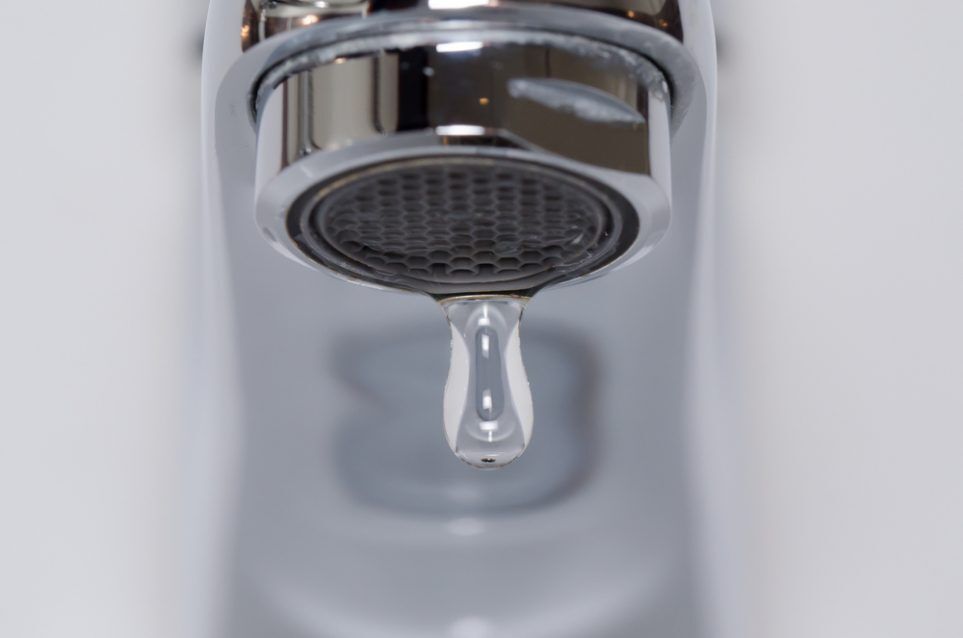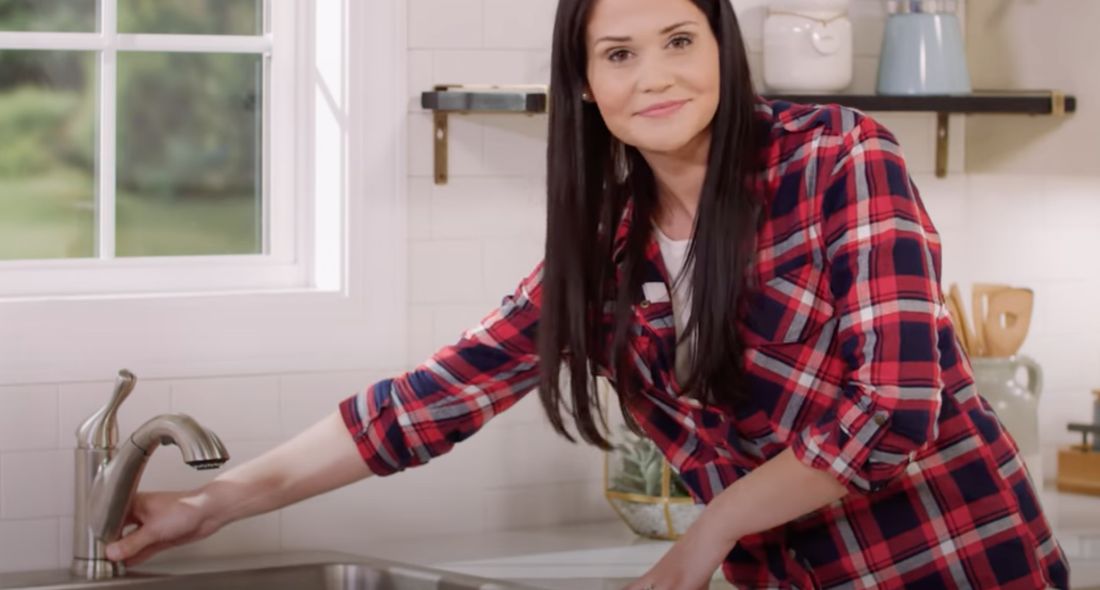Learning the Significance of Correcting a Leaking Faucet
Learning the Significance of Correcting a Leaking Faucet
Blog Article
We've discovered this great article about How to Fix a Dripping or Leaky Faucet down the page on the internet and thought it made sense to talk about it with you on this site.

Leaking taps could feel like a small aggravation, but their effect surpasses simply the inconvenience of the noise. From drainage to incurring unneeded economic prices and health risks, neglecting a trickling tap can bring about various consequences. In this short article, we'll explore why it's crucial to address this common household issue promptly and effectively.
Wastage of Water
Ecological Influence
Trickling taps contribute considerably to water wastage. According to the Environmental Protection Agency (EPA), a solitary faucet trickling at one drip per secondly can lose more than 3,000 gallons of water annually. This not just strains water resources however also impacts ecological communities and wild animals based on them.
Financial Costs
Raised Water Expenses
Beyond the ecological impact, trickling faucets can inflate water expenses substantially. The gathered waste over time converts into greater energy costs, which can have been avoided with prompt repairs.
Prospective Residential Or Commercial Property Damages
Moreover, extended dripping can cause harm to components and surfaces surrounding the tap. Water buildup can cause staining, rust, and also architectural concerns if left unattended, resulting in additional fixing costs.
Health Concerns
Mold and Mildew Growth
The constant presence of moisture from a dripping faucet creates a perfect environment for mold and mold growth. These fungi not just endanger interior air high quality but also posture wellness dangers, particularly for individuals with respiratory system problems or allergies.
Waterborne Conditions
Stationary water in trickling faucets can come to be a breeding place for bacteria and various other microorganisms, increasing the threat of waterborne diseases. Impurities such as Legionella germs grow in stagnant water, potentially bring about major ailments when ingested or breathed in.
DIY vs. Expert Fixing
Benefits and drawbacks of DIY Repair Service
While some might attempt to deal with a dripping faucet themselves, do it yourself fixings come with their own set of obstacles. Without correct expertise and devices, do it yourself efforts can intensify the concern or bring about incomplete repair work, extending the trouble.
Advantages of Working With a Specialist Plumber
Hiring a professional plumber ensures that the underlying cause of the dripping faucet is addressed effectively. Plumbings possess the proficiency and equipment to detect and fix faucet issues efficiently, conserving time and lessening the danger of further damages.
Step-by-Step Guide to Dealing With a Dripping Tap
Tools Called for
Prior to attempting to deal with a leaking faucet, collect the necessary devices, including a flexible wrench, screwdrivers, replacement components (such as washing machines or cartridges), and plumber's tape.
Common Tap Issues and Their Solutions
Identify the kind of faucet and the certain issue triggering the drip. Usual problems consist of damaged washers, rusty shutoff seats, or defective O-rings. Describe producer directions or on-line tutorials for step-by-step assistance on fixings.
Preventive Measures
Regular Maintenance Tips
To avoid trickling taps, perform routine maintenance such as cleansing aerators, evaluating for leaks, and replacing worn-out parts promptly. Additionally, think about setting up water-saving gadgets or upgrading to much more effective fixtures.
Significance of Prompt Fixes
Attending to leaking faucets as soon as they're noticed protects against more water waste and prospective damage, inevitably conserving both water and money in the long run.
Influence On Property Worth
Assumption of Well-Maintained Home
Maintaining a residential or commercial property in good condition, consisting of attending to upkeep problems like dripping faucets, boosts its viewed worth and value amongst potential purchasers or lessees.
Impact on Resale Worth
Qualities with well-kept plumbing fixtures, consisting of faucets, command higher resale values in the real estate market. Addressing dripping taps can contribute to a favorable impression throughout building assessments and negotiations.
Ecological Duty
Private Payment to Conservation
Taking obligation for dealing with trickling faucets aligns with wider initiatives toward water conservation and environmental sustainability. Every person's activities jointly make a significant impact on protecting valuable sources.
Lasting Living Practices
By focusing on punctual repairs and adopting water-saving habits, individuals contribute to sustainable living practices that profit both existing and future generations.
Verdict
Resolving a trickling tap exceeds plain convenience; it's a crucial step towards saving water, reducing economic costs, and securing health and building. Whether with do it yourself repairs or expert assistance, doing something about it to repair leaking taps is a small yet impactful method to advertise liable stewardship of resources and contribute to a much healthier, extra lasting future.
How to Fix a Dripping or Leaky Faucet
A leaking faucet is one of the most common problems that homeowners encounter, but it being commonplace doesn’t make it any less annoying. The constant drip drip drip of a leaking bathtub faucet, showerhead, or sink tap can disturb your home’s serenity. Left neglected, a dripping faucet can also result in higher water bills and discoloration or mold growth in your sink or plumbing fixtures.
Fortunately, you don’t have to be a trained plumber to know how to stop a dripping faucet. With some basic tools, replacement parts, and a little patience, leaky faucet repair is a breeze. In this article, we’ll explain what causes dripping faucets and how you can fix them.
What Causes a Leaking Faucet?
Kitchen and bathroom faucets come in all manner of designs, but most involve some combination of valves, O-rings, seals, and washers. The O-ring is usually the weakest link, but any one of these pieces can wear down over time. Heat, moisture, temperature fluctuations, minerals, mold, and movement can contribute to warping and corrosion, breaking the watertight seal. This just comes with the territory of being a homeowner. Everything is always subject to wear and tear, and some component parts of your appliances and fixtures need to be replaced on occasion. At least replacement O-rings are cheap!
More rarely, dripping faucets can be a symptom of excessively high water pressure. Were this the case in your home, you would probably notice that the leak is not isolated to one faucet. Water pressure issues are harder to resolve on your own. We recommend contacting a professional plumber if you suspect your water pressure is too high.
How to Fix a Dripping Faucet
Pipe wrench or monkey wrench Allen wrench set Screwdrivers Old towel or rag Shut off the water.
Before you do anything, you need to turn off the water to keep from drenching your kitchen or bathroom. You should find a valve under the sink and against the wall. Once you’ve turned this valve, try turning the faucet on to confirm that the water source has been cut off.
If you can’t locate your local valve for the faucet you’re working on, you can always shut off the water to the house at the main valve. Of course, this will prohibit anyone from using the sinks, showers, or toilets while you’re working on the faucet that’s giving you trouble.
Plug or block the drain.
You’ll be disassembling the faucet and removing some small bits of hardware. Plug the drain with a stopper or rag to avoid the possibility of a small screw falling into your P-trap.
Take apart the faucet assembly.
There are several varieties of kitchen and bathroom faucets, each with its own manner of assembly. For detailed instructions on how to disassemble your faucet, you can refer to the fixture’s manual or contact the manufacturer. If you know whether you have a ball, disc, cartridge, or compression faucet, you can find detailed schematics online.
In general, you need to begin by removing the faucet handles. You might notice a small screw that you’ll need to remove with a screwdriver or Allen wrench. If you don’t see any visible securing hardware, it’s likely hidden under a decorative cap that can be unscrewed or popped off with flathead screwdriver.
Remove each piece methodically, consulting a schematic when necessary. Take notes or arrange the pieces in such a way to make it easier to correctly reassemble the faucet later.
Remove the cartridge.
Once you’ve removed the handles and securing hardware, you should be able to remove the valve cartridge or stem. Some cartridges will slide right out. Other faucet models will require you to loosen a nut with a pipe wrench before you can remove the valve stem.
Examine the exposed hardware.
With the cartridge or stem removed, inspect the component parts. Check the rubber O-rings for wear and tear. Also examine the seat washer for corrosion or other damage. These pieces are usually the responsible parties for a dripping faucet, but it’s worth inspecting the other component parts while you have the faucet disassembled.
Find replacement parts.
Once you’ve identified which faucet component has failed, find an identical replacement. Your local hardware store should have O-rings, seat washers, and other standard components in stock. If you have a luxury or uncommon faucet, you may have to contact the manufacturer for a replacement part.
It’s a good idea to take your old parts with you to the hardware store so you can compare them with the store’s inventory and be sure you’re purchasing the correct replacement.
Reassemble the faucet.
With your new parts in hand, reconstruct the faucet and handles. Don’t be tempted to overtighten screws or nuts. You might think this could create a better seal, but it can instead damage or bend a delicate part of the assembly and create a new problem for you.
Turn on the water and test the faucet.
The only thing left to do is test your work. Unplug the sink, turn the water back on, and try the faucet. Congratulate yourself on a job well done!
https://www.libertyhomeguard.com/how-to-fix-a-dripping-or-leaky-faucet/

As an avid reader on Why Are My Faucets Dripping (And Can I Fix It Myself)?, I figured sharing that excerpt was a good thing. Enjoyed reading our posting? Please quickly share it. Help others check it out. Thank you so much for your time invested reading it.
Report this page